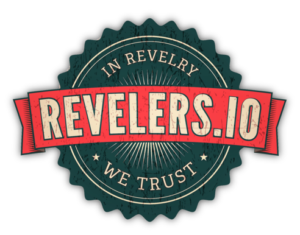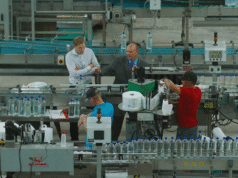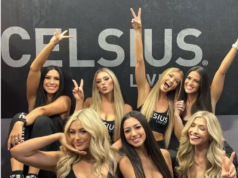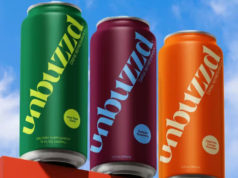“While Millennial research shows they would rather spend money on experiences vs. things, they largely live in the digital world. If you want to market a beverage, food or other tangible item which offers varying consumers an experience, get out there and see the people (again). Leave the blogosphere and spend hard marketing dollars on personal connections. Faces sell cases, an old beverage delivery man’s motto, and it works to this day with so many consumers across many verticals.”
Rapidly evolving consumer trends are making beverage industry marketers evaluate whether their strategies are in sync with what’s motivating consumers. All industries face the challenge of change, so consider these three questions as you assess your marketing strategy.
If an influencer doesn’t already use your brand, or live the brand’s lifestyle authentically, move on.
1. How’s your social life?
It’s common sense for brands to have a social media strategy, but can you afford to leave that social interaction to chance?
Most brands have become quite good at engaging influencers to build loyalty, especially through the use of social media influencers. An influencer, by definition, is someone who lives on social media and has a particular expertise or personifies a specific lifestyle such as fitness, beauty, or parenting, and has amassed a multitude of followers or fans. They may wield great influence; however they are not a magic pill.
Many marketers today quickly offer to pay for a post, however if the over-posed selfie with the branded product is a one-time shot, Millennial consumers will view this as an unauthentic endorsement, and the money spent will be a waste, even possibly damage the brand’s reputation through over commercialization. If an influencer doesn’t already use your brand, or live the brand’s lifestyle authentically, move on, as this swipe right generation will not be impressed.

2. Are you leaving everyone else on the sidelines and only focusing on Millennials?
If you’re not sure how to reach Millennials, go to Instagram or Snapchat and search your friend’s kids’ pages.
Marketing to Millennials is the hot topic, but what about Gen Xers, born between the late 60’s and late ‘70’s? What about the better-than-ever generation between X and Boomers, who are getting younger every decade, or so it seems. Those two groups have money to spend and social media skills, too.
Gen Xers want to have relationships with their brands, and not just digital ones, either. They grew up watching TV commercials with catchy jingles in the ‘70s and require other forms of communication beyond an Instagram post. Are you still budgeting for and engaging in those activities? While Millennial research shows they would rather spend money on experiences vs. things, they largely live in the digital world. If you want to market a beverage, food or other tangible item which offers varying consumers an experience, get out there and see the people (again). Leave the blogosphere and spend hard marketing dollars on personal connections. Faces sell cases, an old beverage delivery man’s motto, and it works to this day with so many consumers across many verticals.
CELSIUS, a leading fitness drink, is banking on building a brand by association, through Tough Mudder, the 10 mile obstacle course races which combine mud and teamwork. In a quest to market an active lifestyle beverage brand, this platform is a perfect place to interact with consumers who are committed to going outdoors to experience life while trying new things. This community of all ages is strong, and fiercely loyal to the brands which support them. CELSIUS launched a partnership with Tough Mudder in 2018 and is enjoying the benefits of “Tough Mudder Presented by CELSIUS,” which gives the brand a platform to sample consumers of every age group at weekend events nationwide. The branded obstacle courses, dedicated digital content series, and consumer on site interaction, provide CELSIUS with educational opportunities to build awareness, gain trial and build a nationwide community of brand fans.
The wide ranging demographics are focused on living fit, active lives—a target rich environment who will taste and experience the brand.
3. Should you plan your work and work your plan or wing it a bit?
Larger beverage brands have traditionally had a top down approach to marketing, whereas marketing a smaller brand or innovative challenger brand requires listening to consumers first and following with an authentic response to build loyalty—and ultimately sales. Sometimes the best way to market isn’t with a set-in-stone plan telling consumers what to do, but a nimble plan flexing marketing dollars to take advantage of events which appeal to the target audience. The payoff may include viral sharing and earned media, plus a momentum build that creates the perception the brand is “everywhere.” Marketers need to give consumers ways to discover their brand by being present in their social worlds—online and on the ground.
As an example, CELSIUS marketers noticed reality television star Sammi Sweetheart posting her pre-workout routine, which included drinking the brand. With over 2.6 million followers, they reached out to invite her to an iHeart Radio event they were sponsoring in her local area. Interest in Sammi and what she was up to generated a live mention on the Z100 morning show with Elvis Duran, reaching millions of target listeners with an authentic, double endorsement.
What Should You Remember?
Consumers aren’t going to stop preferring experiences over products, which can be a great opportunity. Social media done 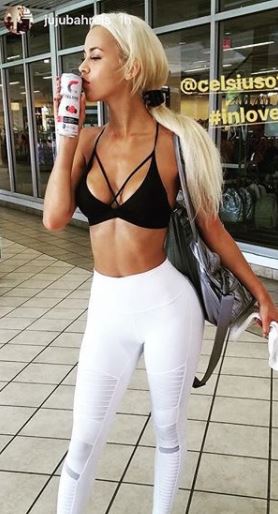 right is a two-way street that provides relevant content to consumers and invaluable exposure to marketers. Choose your influencers wisely. An engaging individual with a growing social following is far better than someone with a huge following who doesn’t have an authentic brand connection. Keep your eyes and ears open to see what consumers are telling you and what your next move should be.
right is a two-way street that provides relevant content to consumers and invaluable exposure to marketers. Choose your influencers wisely. An engaging individual with a growing social following is far better than someone with a huge following who doesn’t have an authentic brand connection. Keep your eyes and ears open to see what consumers are telling you and what your next move should be.
Vanessa Walker is executive vice president of marketing and innovation at Celsius Holdings, Inc.
